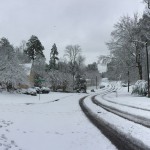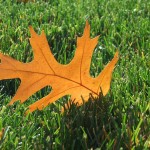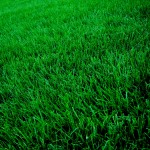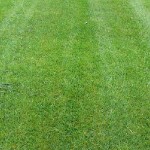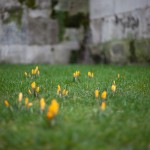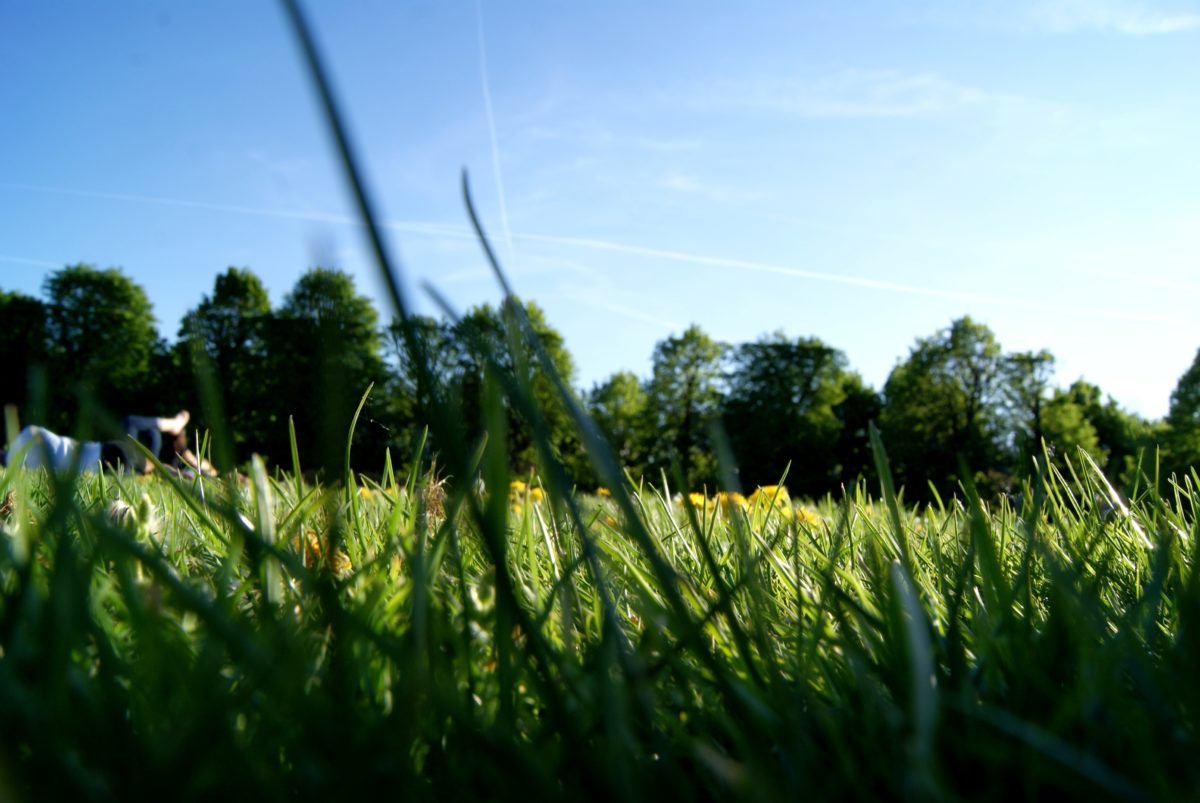
A lawn is considered established after it has been mowed at least three times. Because it’s summer we’re assuming that your lawn is already established. Caring for that established lawn can be tricky, especially depending on the grass types that make up your yard and the overall climate of the area. In Raleigh, N.C., lawn care varies across the state but there are some common trends that reveal themselves after years of experience in the field.
Mowing
Sharpen your mower blades often and keep them balanced. Sharp mower blades create cleaner cuts on your lawn’s grass blades. Dull mower blades drastically cut down the health of your lawn because instead of cutting crisp edges they’ll just rip the grass apart. Tearing off the tips of the grass invites disease which will ultimately result in an increase of weeds in your lawn. Using a sharp mower blade is exceptionally crucial when it comes to difficult-to-mow grasses, such as zoysiagrass, bahiagrass, and certain types of perennial ryegrass. A mower blade that’s properly sharpened and balanced will reduce mower vibration, lengthen the overall life of the mower, and reduce fuel consumption simply because it’s more efficient.
Mow your lawn at the proper height. The frequency that you mow your lawn is determined by a number of factors such as temperature, fertility, humidity, season, and the natural growth rate of the grass. In most areas during the growing season, it’s best practice to mow the lawn weekly. This is exceptionally true in Raleigh. Also, during the summer growing season it’s a good idea to mow higher rather than shorter. If you think that mowing short one week will save you time mowing the next week that’s a bad way of going about your lawn maintenance and care. Your lawn should be mowed often enough that you only take off about one-third of the blade at a time. If you miss a week of mowing then make up the missed week in increments rather than all at once.
Mulching
Mulch clippings back into the lawn. A lot of homeowners think that the key to preventing thatch build-up is to bag the clippings every time they mow. The right approach to this is outlined above so that you’re able to recycle your clippings back into the lawn. In fact, thatch build-up is made up of roots, stems, and the lower, thicker parts of the grass plant that are beneath the mower’s blades during a mow. Clippings, in reality, contribute little to thatch and actually quickly decompose and release natural nutrients back into the lawn, as well as insulate the moisture. You only really want to rake, bag, and remove clippings when you’re behind on mowing and cutting off more than just the tips of the blades. Aerating your lawn in the early spring is a better preventive to thatch than bagging the clippings.
Fertilizing
Lawn care professionals recommend soil tests every two to three years to determine the amounts of lime, phosphorus, and potassium that your lawn needs. Neglecting soil tests can result in over-fertilizing which can actually send your lawn into shock during the harsh Carolina summers.
Cool-season grasses are a little trickier to nail down as far as proper lawn care practices go. Most educated lawn care professionals will recommend avoiding any nitrogen fertilizers for cool-season grasses, tall fescue for example, after February application through September for North Carolina Piedmont region. The nitrogen application in the piedmont region should happen no later than April 15 — two weeks prior in the coastal region and two weeks after in the mountain region. Nitrogen doesn’t improve the overall lifespan of tall fescue but does enhance its green color.
Warm-season grasses are easier to nail down. Avoid any fall or winter applications of nitrogen during the winter months to reduce frost and winter injury.
Liming
Proper application of lime amendments has eluded homeowners in Raleigh for decades. Most soil in North Carolina lean more toward the acidic side of the pH scale and are ideal conditions for centipede grass. Most grass types thrive in a soil pH between 6.5 and 7.0. Lime can be applied at any month or season during the year but experts suggest that winter is best because of the reduction in foot traffic on lawns. Light winter rainfall minimizes runoff, coupled with fluctuations freezing and thawing, help amend lime into the soil.
Fertilizers and lime should be applied evenly throughout the lawn with the use of a rotary spreader. Apply half of the fertilizer or lime in each direction to ensure that the entire lawn is covered.
Weed Control
Weeds happen in every lawn, but a healthy lawn will naturally out-compete most types of weeds. With that being said, having planned accordingly before overseeding your yard with a certain type of grass is key if you want to avoid a major weed headache in the future.
Once you have an established lawn there are three big players that contribute to natural weed prevention:
- Adequate amounts of water.
- Proper fertilization.
- Healthy mowing habits.
Side note: frequent mowing will also chop off seed heads at the tips of weeds preventing them from maturing and being allowed to germinate in your lawn. Yards that are stressed out from drought or irregular watering, burned from over-fertilization, or from scalping are much more subject to being infiltrated by weeds. Soil compaction can be another key contributor.
It’s a good idea to keep the chemical use to a minimum during the growing season. There’s really no single herbicide in existence that that’s going to be totally effective against all weeds in a lawn. Knowledge is power. I recommend researching different types of weeds because when it comes to the weed battle knowledge is power.
Aeration
Soil areas where foot traffic is considerably heavy are prone to compaction. Aerating your lawn is a good solution that we recommend once a year, either in the early spring or the late fall are the best times. Cool-season grasses are better off being aerated in the fall or early spring and warm-season grasses are better off being aerated more toward the late spring or early summer. There are certain types of aerators called plug aerators that do the best job perforating the soil because the tines at the end of the machine actually remove plugs from the soil allowing the pressure from compaction to be alleviated. The plugs, like mulching, end up acting as a natural fertilizer. Consult a lawn care or landscape company that offers aeration as a service if rental equipment is not available.
That’s it for our summer guide to lawn care in Raleigh, N.C. Have any lawn care related questions? Share your thoughts in the comments below.
